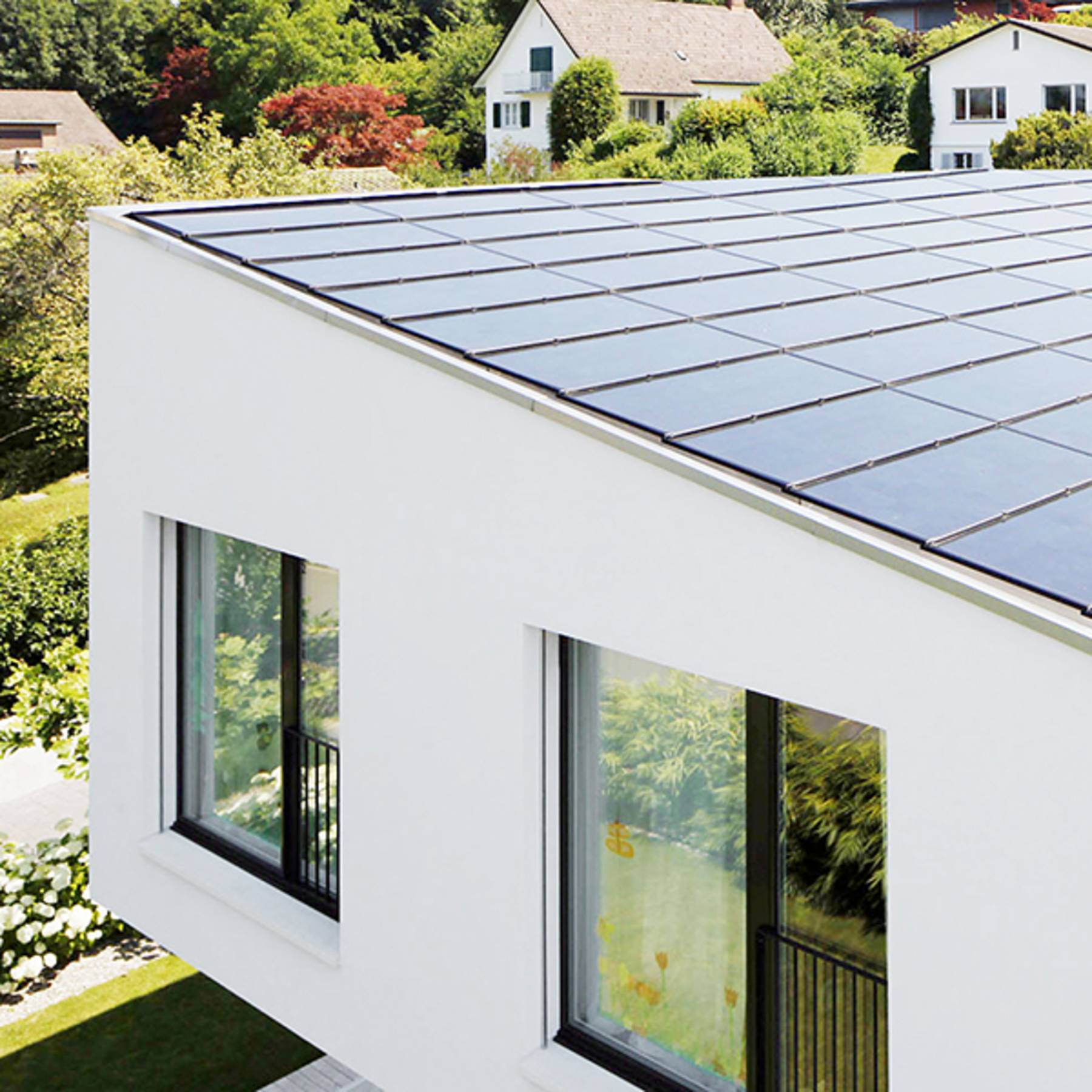You can hide your solar panels by installing them on a roof that blends in with the rest of the house, or by building a frame around them. You can also paint them to match the color of your roof. If you have a lot of trees around your property, you can place the panels behind them so they are not as visible.
- Find a location for your solar panels
- It should be a sunny spot with little to no shade
- Mount the panels on the roof or ground, making sure they are secured and level
- Connect the panels to an inverter, which will convert the DC power from the panels into AC power that can be used in your home or business
- Run wiring from the inverter to your electrical panel, making sure to use proper grounding and bonding methods per local code requirements
- Have an electrician connect the wiring to your main breaker panel and inspect everything for safety before turning on the system

Credit: nakedsolar.co.uk
Can Solar Panels Be Invisible?
Can solar panels be invisible?
The short answer is yes, solar panels can be made invisible. However, the technology is still in its infancy and there are some challenges that need to be overcome before it can be widely used.
Solar panels work by absorbing sunlight and converting it into electricity. Typically, they are made from silicon wafers which are dark in color, making them quite visible when installed on a roof or other sunny location. However, there has been research into developing clear solar cells which would be much less conspicuous.
One of the biggest challenges with making solar panels invisible is ensuring that they are still able to absorb enough sunlight to generate power efficiently. Current transparent solar cell prototypes have only been able to achieve around 1% efficiency, compared to 10-20% for standard silicon cells. This means that a lot more area would be required to generate the same amount of power, which could make them impractical for many applications.
Another issue is that current transparent cells rely on organic materials which degrade quickly when exposed to light, meaning they would need to be replaced frequently.
Despite these challenges, there is potential for transparent solar cells to become a useful technology in the future. They could be used on buildings and cars where aesthetics are important, or integrated into windows and other glass surfaces to generate power without being obtrusive.
With further research and development it may eventually become possible to mass-produce high-efficiency transparent solar cells which could help meet our growing demand for renewable energy sources.
Can You Camouflage Solar Panels?
Solar panels are designed to absorb sunlight and convert it into electricity. However, the reflective surface of the solar panel can make it difficult to blend in with its surroundings. There are a few ways to camouflage solar panels, such as installing them on rooftops or using special film that changes the color of the solar panel.
Do Solar Panels Affect Neighbors Property Values?
Solar panels have been known to increase the value of a property. In some cases, it has been shown that solar panels can actually increase the sale price of a home by as much as $15,000. While this is not an across the board number, and will vary depending on location, it is still good news for those who are looking to go solar.
Not only does this mean that you could potentially make money off of your investment, but it also means that your neighbors’ property values will likely go up as well.
Do Solar Panels Cause Glare for Neighbors?
No, solar panels do not cause glare for neighbors. In fact, solar panels can actually help reduce glare from the sun. Solar panels are made of a material that is specifically designed to reflect sunlight away from the panel.
This helps to keep the panel cooler and prevents the sun from causing any glare.
Generating power INSIDE your base! Rust Hidden Electricity (PATCHED)
Roof Solar Panels
Solar panels are a great way to reduce your energy bills and help the environment. Here are some things you should know about roof solar panels:
1. Solar panels can be mounted on your roof or on the ground.
If you live in an area with lots of sun, mounting them on your roof will give you the best results.
2. Solar panels need to be facing the sun to work properly. This means that if you have a south-facing roof, your solar panels will work best.
North-facing roofs will also work, but not as well as south-facing ones.
3. Solar panels come in different sizes and wattages. The size of the panel will determine how much power it can generate, and the wattage will determine how much electricity it produces.
Choose a size and wattage that meets your needs.
4. Solar panel systems can be expensive, so be sure to do your research before purchasing one.
Inconspicuous Solar Panels
Solar panels are an increasingly popular way to generate renewable energy, but they can be an eyesore. Inconspicuous solar panels are a new type of solar panel that is designed to blend in with its surroundings. These types of solar panels can be made to match the roof of a home or building, and they can even be made to look like shingles.
inconspicuous solar panels are also becoming more affordable, as the technology improves.
There are a few different ways that inconspicuous solar panels can be installed. One option is to have the panels mounted on the roof so that they blend in with the rest of the shingles.
Another option is to have them installed on the ground, where they can be hidden among landscaping. There are also companies that make Solar skins, which are thin film covers that can be applied to existing roofs or walls to give them a more uniform appearance.
Inconspicuous solar panels have many benefits over traditional solar panels.
They can increase the value of a home or building, and they can save money on energy bills. They are also much less likely to be damaged or stolen, since they are not as visible as traditional solar panels.
Solar Skin Panels
Solar skin panels are a new type of solar panel that can be applied directly to the surface of a building. This technology has the potential to revolutionize the way we generate electricity from the sun, making it more efficient and less expensive. Solar skin panels are made from thin film photovoltaic cells that can be flexibly attached to any surface.
This makes them ideal for use on curved or irregular surfaces, such as rooftops or walls. The flexibility of solar skin panels also allows them to be installed in locations where traditional solar panels cannot be used, such as on shaded roofs or in urban areas with high levels of air pollution.
Solar skin panels are still in the early stages of development, but they have already shown great promise.
In laboratory tests, solar skin panels have been found to be up to 30% more efficient than traditional silicon-based solar cells. They are also much lighter and thinner than conventional solar panels, making them easier to transport and install. Solar skin panels could eventually be produced at a fraction of the cost of traditional solar cells, making them an affordable option for everyone.
If you’re looking for a way to generate clean, renewable energy, solar skin panels may be the answer. These innovative new devices have the potential to change the way we power our homes and businesses, making it cleaner and cheaper than ever before.
Solar Shingles
Solar shingles are a type of solar panel that is designed to look like traditional roofing shingles. They are usually made from thin-film photovoltaic cells, which can be integrated into the roofing material. Solar shingles can be used to power a home or business, and they offer a number of advantages over traditional solar panels.
One advantage of solar shingles is that they are less visible than traditional solar panels. This can be important for aesthetic reasons, or if you are trying to sell your home. Solar shingles also tend to be more durable than traditional panels, and they often come with warranties of 20 years or more.
Another advantage of solar shingles is that they can be installed by a qualified contractor without special training. This means that installation costs are typically lower than for traditional solar panels. Solar shingles also blend in with your roof better than bulky panels, making them less likely to be damaged in high winds or during severe weather events.
Conclusion
While solar panels are a great way to reduce your carbon footprint, they can be an eyesore. If you want to hide your solar panels, there are a few things you can do. You can build a screen around them, plant trees or shrubs in front of them, or paint them to match your house.
With a little bit of effort, you can have the best of both worlds – clean energy and a nice looking home.





